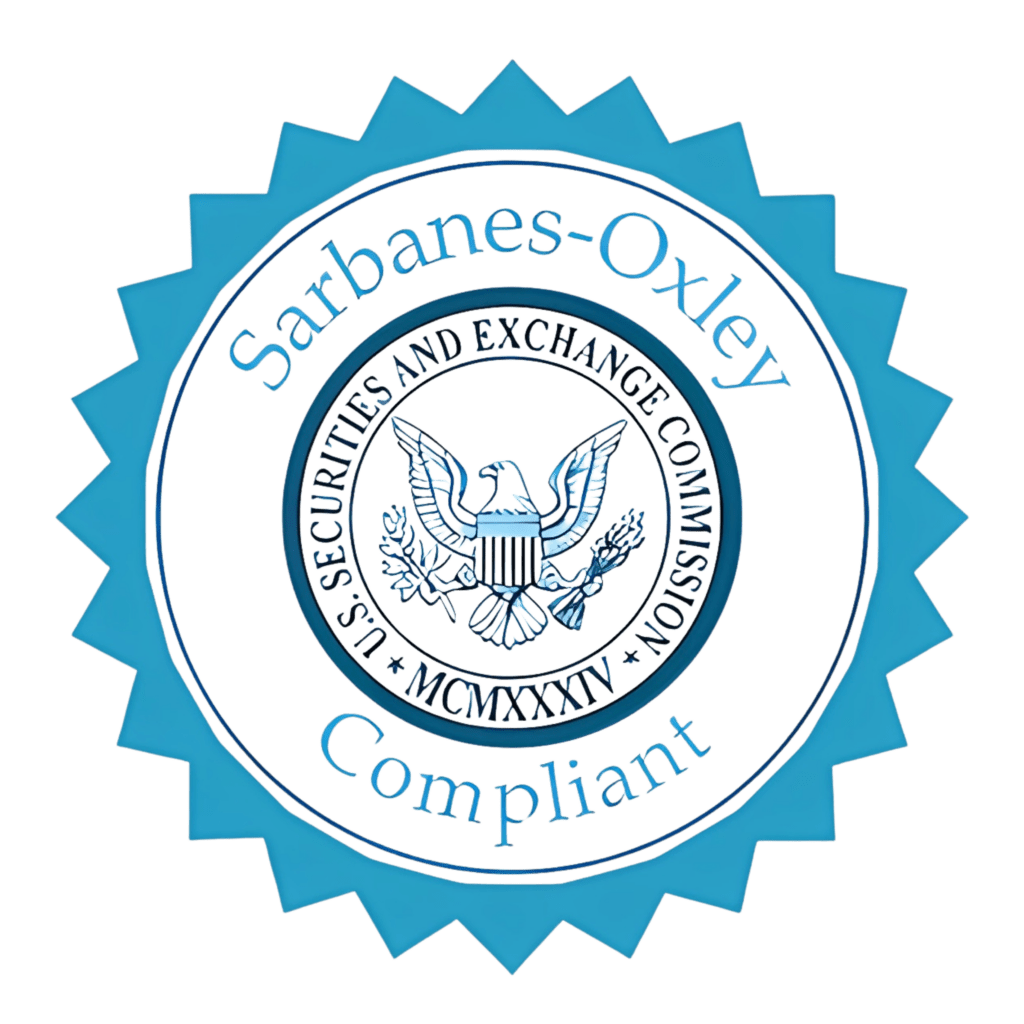When partnerships file their annual tax return with the IRS, accuracy and transparency are critical. Form 1065 Schedule L plays a vital role in it. Schedule L acts as the partnership’s balance sheet, giving the IRS a clear snapshot of the business’s financial position at the beginning and end of the tax year. While some smaller partnerships may qualify for an exception, most mid- to large-sized partnerships must complete Schedule L to stay compliant. Understanding how this schedule works is key to avoiding penalties and ensuring that the numbers on your tax return match your actual books.
Table of Contents
What is Schedule L on Form 1065?
Schedule L on Form 1065 is the section of the partnership tax return that reports the partnership’s assets, liabilities, and partners’ equity. In simple terms, it mirrors the partnership’s balance sheet from its accounting records. The IRS requires this information to ensure the partnership’s reported income and expenses align with its financial position.
Unlike other schedules on Form 1065, Schedule L is not about income or deductions—it’s about the financial structure of the partnership. By comparing beginning-of-year and end-of-year balances, the IRS can spot major changes in assets or partner equity that may need further explanation.
What is Schedule L on Form 1065 Used For?
The primary purpose of Form 1065 Schedule L is to give the IRS a detailed financial picture of the partnership. Specifically, Schedule L is used to:
- Show the IRS the partnership’s assets (cash, receivables, inventory, property, and investments).
- Report the partnership’s liabilities (loans, accounts payable, and mortgages).
- Track partners’ capital accounts (contributions, distributions, and retained earnings).
- Reconcile whether the reported profit, loss, and distributions align with the balance sheet changes.
Schedule L ensures that actual accounting data support the tax return numbers. For partnerships with larger operations, this adds credibility and reduces the risk of an IRS audit.

Who Must File Schedule L?
Not every partnership is required to file Schedule L on Form 1065. The IRS created a small partnership exception to reduce the burden for very small businesses.
A partnership is not required to complete Schedule L (or Schedules M-1 and M-2) if it meets all three of these conditions:
- Total receipts for the tax year are less than $250,000.
- Total assets at the end of the tax year are less than $1 million.
- The partnership is not required to file Schedule M-3 (which applies to very large partnerships).
If a partnership meets all three requirements, it can skip filing Schedule L. However, many partnerships choose to complete it anyway for clarity, since it helps keep tax reporting consistent with their accounting records.
However, for partnerships with receipts above $250,000 or assets of $1 million or more, filing Schedule L is mandatory.
What Information Does Schedule L Include?
When reviewing the Form 1065 Schedule L instructions, the IRS makes it clear that Schedule L functions as a balance sheet. It requires partnerships to report their financial position at the beginning and end of the tax year. The information is categorized in the following way:
- Assets: Cash, trade notes and accounts receivable, inventories, U.S. government obligations, tax-exempt securities, mortgage and real estate loans, buildings and other depreciable assets (net of depreciation), land, and other investments.
- Liabilities: Accounts payable, mortgages, notes and bonds payable (both short- and long-term), and other debts owed by the partnership.
- Partners’ Capital Accounts: Contributions from partners, retained earnings, distributions made during the year, and adjustments for profits or losses.
The IRS uses this information to verify that the partnership’s reported income, expenses, and partner distributions reconcile with the partnership’s true financial position.
How Schedule L Connects with Other Schedules (K-1, M-1, M-2, M-3)
Although Schedule L on Form 1065 stands alone as the balance sheet, it also ties closely to other schedules in the return. Understanding these connections helps partnerships avoid inconsistencies:
- Schedule K-1: The ending balances in partners’ equity accounts shown on Schedule L should align with the amounts reported on each partner’s Schedule K-1. If they don’t, the IRS will likely question the return.
- Schedule M-1: Reconciles net income (loss) per books with net income (loss) per return. The totals from Schedule L’s equity section feed into this reconciliation.
- Schedule M-2: Shows changes in partners’ capital accounts. Schedule L’s beginning and ending equity figures should reconcile with the totals reported here.
- Schedule M-3: Large partnerships required to file Schedule M-3 will also need to complete Schedule L. The two schedules must present a consistent financial picture.
while Schedule L is a snapshot, Schedules K-1, M-1, M-2, and M-3 provide the narrative behind the numbers.
How to Fill Out Schedule L – Step-by-Step Guide
Filling out Form 1065 Schedule L is easy if you follow the IRS Form 1065 Schedule L instructions step by step. Here’s a simplified guide:
Step 1 – Gather Records
Collect the partnership’s balance sheet from your accounting software or financial statements. Ensure you have both beginning-of-year and end-of-year figures.
Step 2 – Enter Assets
Report cash, accounts receivable, inventories, investments, and fixed assets (net of depreciation). Example: At the start of the year, a partnership had $50,000 in cash and $25,000 in inventory. By year-end, cash was $75,000, and inventory was $40,000.
Step 3 – Enter Liabilities
Include accounts payable, loans, mortgages, and other debts. Example: The partnership began the year with a $100,000 mortgage and ended with $85,000 after making payments.
Step 4 – Enter Partners’ Capital Accounts
Show contributions, distributions, and net income/loss for the year. Example: Two partners each contributed $10,000 at the start of the year. During the year, they distributed $5,000 each but earned $20,000 in net income, bringing the ending capital to $40,000.
Step 5 – Check the Balance
Verify that Assets = Liabilities + Partners’ Capital. If they don’t balance, recheck your entries against the partnership’s books.
Example in Practice:
- Beginning Assets: $200,000
- Beginning Liabilities: $100,000
- Beginning Capital: $100,000
- Ending Assets: $250,000
- Ending Liabilities: $90,000
- Ending Capital: $160,000
Here, the change reflects $20,000 in profit retained in the partnership plus additional capital contributions.
Common Errors to Avoid in Schedule L
Even with the IRS-provided Form 1065 Schedule L instructions, partnerships often make mistakes that trigger notices or audits. Here are common pitfalls to watch for:
- Unbalanced Totals: Forgetting that assets must equal liabilities plus capital is one of the most frequent errors.
- Mismatched Beginning Balances: Beginning-of-year figures must match the prior year’s ending balances.
- Incorrect Partner Loans: Loans from partners are sometimes misclassified as capital instead of liabilities.
- Not Reconciling with Other Schedules: Discrepancies between Schedule L and Schedules M-1, M-2, or partner K-1s raise IRS red flags.
- Omitting Assets or Liabilities: Some partnerships leave out smaller items like prepaid expenses or accrued expenses, which causes inaccuracies.
Avoiding these mistakes ensures that Schedule L supports your partnership return rather than inviting IRS scrutiny.
What Happens if a Partnership Doesn’t File Schedule L When Required?
Failing to meet the 1065 Schedule L requirements can cause serious compliance issues for partnerships. If a partnership is required to file Schedule L but doesn’t include it, the IRS may treat the return as incomplete. This often results in:
- IRS Notices: The IRS may send a letter requesting missing schedules or clarification of reported numbers.
- Penalties: Incomplete or inaccurate partnership returns are subject to the same penalties as late filings.
- Increased Audit Risk: Missing Schedule L makes it harder for the IRS to reconcile income, expenses, and equity changes. This increases the likelihood of further scrutiny.
- Delays in Processing: Refunds or partner K-1 processing may be held up until the missing information is provided.
For partnerships with receipts over $250,000 or assets over $1 million, skipping Schedule L is not an option. It’s critical to follow the 1065 Schedule L requirements carefully to avoid compliance headaches.
Deadlines & Penalties for Schedule L on Form 1065
Since Schedule L is part of Form 1065, its deadlines are the same as the partnership return deadline:
- Calendar-year partnerships: Due March 15 of the following year.
- Fiscal-year partnerships: Due on the 15th day of the third month after the close of the fiscal year.
- Extensions: Partnerships can request a six-month extension by filing Form 7004 before the original deadline.
Penalties for Late or Incomplete Schedule L
If you miss the deadline or fail to file a complete return (including Schedule L), the IRS can impose:
- Late filing penalty: $245 per partner, per month (for returns due in 2025), up to 12 months.
- Accuracy penalties: If incorrect or omitted balance sheet items lead to underreporting, additional penalties may apply.
- Information mismatch flags: If partner capital accounts on Schedule L don’t align with Schedule K-1, the IRS may request corrections or impose penalties for misreporting.
Meeting the Form 1065 Schedule L requirements on time not only avoids penalties but also keeps the partnership’s compliance record clean.

Conclusion:
Form 1065 Schedule L plays a vital role in ensuring that a partnership’s tax return matches its true financial position. While smaller partnerships may qualify for the small partnership exception, most must file Schedule L to remain compliant with IRS rules. By following the 1065 Schedule L requirements, ensuring accuracy, and meeting deadlines, partnerships can reduce their audit risk and avoid costly penalties.
Do you need expert help preparing your partnership return or ensuring your Schedule L balances? Our team specializes in complex tax filings for partnerships and LLCs.Profitjets is a trusted and preferred Tax Advisor and Tax consultant, where certified and experienced experts handle your tax strategy, Tax filing, and use all relevant deductions to manage your tax liability. We take pride in providing comprehensive end-to-end services, from bookkeeping and taxation to advisory services like Virtual CFO Services. The wide array of services we offer includes outsourced accounting and bookkeeping services, outsourced bookkeeping for CPAs, tax filing and tax compliance services, and virtual CFO services. Contact us today to ensure your Form 1065 is accurate, compliant, and filed on time.
FAQ Section – Common Questions About Schedule L Form 1065
1. What is Schedule L on Form 1065 used for?
Schedule L is the balance sheet section of Form 1065. It shows the partnership’s assets, liabilities, and partners’ equity at the beginning and end of the tax year. The IRS uses it to verify that the reported income, deductions, and partner distributions align with the partnership’s financial position.
2. What is the purpose of Schedule L on Form 1065?
Schedule L reports a partnership’s balance sheet, showing assets, liabilities, and equity at the beginning and end of the year. It ensures the IRS can verify that income, expenses, and partner distributions align with the financial position of the partnership.
3. Who must file Schedule L with Form 1065?
Not every partnership is required to file Schedule L. Partnerships can skip it if they meet all three small partnership exceptions:
– Total receipts are less than $250,000,
– Total assets are less than $1 million at year-end, and
– They are not required to file Schedule M-3.
If these conditions aren’t met, filing Schedule L is mandatory.
4. What information goes on Schedule L?
Schedule L reports the balance sheet of the partnership. This includes:
– Assets: cash, accounts receivable, inventory, investments, property, and other assets.
– Liabilities: accounts payable, mortgages, loans, and other debts.
– Partners’ Capital: partner contributions, retained earnings, and other equity items.
The amounts are shown for both the beginning and end of the tax year.
5. What is the difference between Schedule L and Schedule M-1/M-2?
– Schedule L: Reports the partnership’s balance sheet (assets, liabilities, equity).
– Schedule M-1: Reconciles differences between book income and taxable income.
– Schedule M-2: Tracks changes in partners’ capital accounts during the year.
Together, these schedules help the IRS ensure the financial statements tie back to taxable income.
6. What happens if a partnership doesn’t file Schedule L when required?
If Schedule L is required but not filed:
– The IRS may consider the return incomplete.
– This could trigger penalties, IRS notices, or delays in processing the partnership’s tax return.
– It may also increase the chance of an audit, since the IRS won’t see the supporting balance sheet.
7. Is Schedule L the same as a balance sheet?
Yes, Form 1065 Schedule L is essentially a balance sheet formatted to IRS specifications. It must reconcile with the partnership’s accounting records and tie into other schedules like M-1, M-2, and K-1.
8. Does every partnership need a balance sheet for Form 1065?
No. Only partnerships that exceed the $250,000 receipts or $1 million assets thresholds must include a balance sheet (Schedule L). Smaller partnerships may choose to include one for clarity, but it isn’t required.
9. How do you fill out Schedule L on Form 1065?
To complete Schedule L:
1. Gather your partnership’s book balance sheet from accounting records.
2. Enter beginning-of-year and end-of-year figures for all assets, liabilities, and equity.
3. Ensure the totals balance (Assets = Liabilities + Equity).
4. Double-check that partner capital accounts match what’s reported on Schedule M-2.










